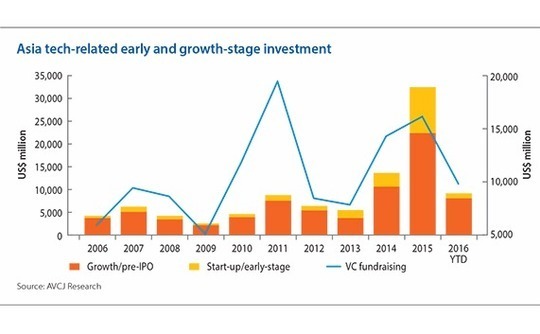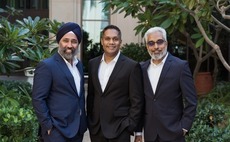
VC value-add: Operational gambit
As competition for VC deals intensifies in Asia and capital becomes commoditized, GPs are stressing their value-add credentials. Should we believe the hype?
When tenCube, a Singapore-based mobile security solutions provider, was looking for venture funding in 2006, value-add didn't come into the equation. "Any money was good at that point," says Darius Cheung, one of three co-founders. "We had no requirements in terms of what investors could bring to the table, and neither were the investors qualified to bring anything apart from capital."
Bootstrapped into existence, tenCube spent 18 months trying and failing to raise capital. The company took on contract work to make ends meet before a professor at the founders' alma mater, the National University of Singapore, provided funding, followed by the university itself. A formal seed round from a government-backed entity finally came in 2010 and tenCube was sold to McAfee later the same year.
Cheung launched his latest venture, property rental website called 99.co, in late 2013 and fundraising has proved easier; the likes of Fenox Venture Capital, Golden Gate Ventures, East Ventures and Sequoia Capital have so far invested around $2 million. These groups also increasingly offer more than just money. "Over time we have observed some of them contribute strong personal experience or networks, or they have taken steps to build platforms through which they can help start-ups," says Cheung.
Asia's venture capital markets are at different stages of development, but the value-add theme is uniform. Investors face increased competition, whether pitching LPs for contributions when fundraising or pitching start-ups for a piece of their latest funding rounds. Differentiation has become a priority and displaying operational capabilities is one way of achieving it, although the enduring question is how much value these investors really add.
"The China market today is bigger than before - there are renminbi players, corporates and insurance firms raising their own VC funds in addition to existing players," says Jireh Li, chief representative in CommonFund Capital's Beijing office. "We are also seeing second or third generation of entrepreneurs who tend to be more experienced and may have specific demands. As a result, there could be a stronger need for VCs to provide value-add: capital is no longer rare and entrepreneurs tend to want deeper partnerships and industry advice in addition to funding."
Value proposition
Venture capital firms have been adding value - or at least claiming to do so - for nearly as long as the asset class has existed. However, Andreessen Horowitz, one of few firms to break into the North American top tier since its founding in 2009, is generally credited with institutionalizing the concept.
"They decided to take the management fees and build best practices in recruiting, marketing and business development, and to provide those resources to portfolio companies as part of their investment," says one LP. "They differentiated themselves in a way that meant everyone else had to start hiring or point at heads and say, ‘That's our HR group, we've always had it.'"
Andreessen Horowitz has 28 investment team members listed on its website, plus around 120 professionals covering everything from technical support to government policy, including seven designated board partners and two professors-in-residence. This is not the industry norm. If a company needs a sales team, Andreessen Horowitz comes in with a hiring plan and helps execute it; others - such as Accel Partners and Sequoia - identify an outstanding sales manager to lead the initiative. They focus on the c-suite by combining smaller-scale internal resources with equally vast industry networks.
Nevertheless, there is an obligation to emphasize value-add credentials. David York, CEO and managing director at Top Tier Capital Partners, presents the dynamic in a similar way to CommonFund's Li. "What do you do as a venture capitalist? Provide capital. And if everyone has capital, what do you do? Provide services with your capital," he explains, adding that the institutionalization that has taken root in North America is simply making its way to Asia.

Firms tend to divide operating capabilities into several silos: legal and financial services; human resources, to assist with recruitment; marketing and public relations, which covers everything from product launches to customer acquisition; technical, to help companies' own engineers; and government relations, which is intended to keep track of regulation.
"It's not just about providing capital; we have to help strategically, so we need people with relevant industry experience. And it is not just senior team members - we recently hired an associate who was previously a product manager at WeChat," says James Mi, co-founder and partner at Lightspeed China Partners.
Of the various operational functions, human resources is often the one start-ups rely on most heavily in the early stages. For example, 99.co was looking to hire a performance marketing and analytics specialist when the individual in question was hired by Golden Gate. This turned out to be a positive outcome for all concerned because 99.co doesn't have to bear the cost of a full-time employee but has access to the required expertise through its investor.
"He would have been a bit of an overkill for us - his experience is too deep for us to truly benefit from it if we had him full-time," says Cheung. "Now we engage him on our payroll two days a week to work on a project, which is perfect for us."
Among 99.co's VC backers, he feels Sequoia has the most extensive non-capital resources. The firm uses its India-focused fund to back start-ups in Southeast Asia and expertise filters from the former market to the latter. This can be attributed to the India franchise being older and better financed than most Southeast Asia VC houses, which means more capital has been invested in building networks over a longer period of time. Sequoia is also an investor in Indonesian ride-hailing and delivery platform Go-Jek and it helped the start-up acquire two teams out of India to augment its technical capabilities.
NSI Ventures, another early investor in Go-Jek, is among those GPs building up their operational capabilities. About six months after closing its debut fund - and with 14 investments completed - Singapore-based NSI made its first two purely operational hires. It brought in a seasoned engineer as CTO-in-residence and the former head of HR at e-commerce business Zalora to assess investees' hiring needs. Several at-call online marketing experts have also been recruited to help companies with customer acquisition and retention.
"At Series A you are often giving companies their first meaningful check and they are in hyper-growth mode, especially as it pertains to recruitment, so it is important to do it in the right way," says Shane Chesson, founder and general partner at NSI. "These companies start with good ideas, they've got some traction, but to really push them into Series B, C and beyond they need to perform, and resources on the tech and HR side are important."
Elephants in the room
Moving through the institutional funding rounds, companies' operational requirements evolve. Growth may still be rapid and recruitment still a headache, but they are viewed in the context of larger-scale, longer-term plans that ultimately lead to monetization and sustainability. A GP's ability to secure that next round of funding is also scrutinized. Again, it is not just about the money; bringing in a significant strategic investor could give a company the edge over its competitors.
As one of the more established firms in the region, GGV Capital began formalizing its value-add about five years ago. The China and US-focused GP must also bring this to bear across multiple stages, having raised $1.1 billion for its most recent fund, which has the capacity to invest from seed through later rounds - from companies that comprise a few founders with an idea to those with mature management teams and more strategic considerations.
Central to GGV's efforts is a portfolio services support group - covering the standard set of competencies - and four-strong venture partner team. The firm also leverages the size of its portfolio through sharing sessions, where executives from investee companies - plus some third-party experts - lead discussions intended to provide management and strategic direction. For younger start-ups, it is a source of expertise that they generally cannot afford to bring in on a consultancy basis.
However, the value-add philosophy described by Jenny Lee, a managing partner at GGV, is more Sequoia than Andreessen Horowitz. "I want to teach the companies how to fish; we provide them with the tools, but we can't fish for them. We contribute to the framework and in some cases help hire the first employees, and after that they have to learn to fish themselves," she says. And with later-stage companies, "the help is more strategic, because they know how to fish. It is more should you fish here or there? What kinds of fish are you looking for? Are you fishing for sharks? It's a lot more brain work."
The variation in approach required for younger and older start-ups does not necessarily signify an inverse relationship between the intensity of value creation efforts and company size. While at an early stage there might be more hands-on involvement such as reorganization of management - to the point that GGV has on occasion replaced CEOs and brought in new senior teams - with mature companies it becomes harder to move the needle.
Lee notes that as fund size increases, investors must offer more services to help businesses stay competitive and generate the expected returns. Return profiles are blended, based on valuation and timing of entry, but for a $1 billion fund to deliver a 3x multiple it is not a matter of generating $3 billion across 30 companies. Rather, much of that return will come from a handful of investments. At the same time, a fund may hold a 10% stake in each of these companies, so the theoretical target valuation is $30 billion per business.
The big bets in a top-up fund designed to support certain companies through multiple rounds must therefore perform very well indeed. Opinion is divided as to how much effort VC investors put into these later phases of development - some industry participants describe top-up funds simply as a means of riding the upward valuation curve for longer - but the nature of their support is different and there will be additional costs in developing those capabilities.
For GGV and others, cross-border strategies are a key facet of the operational offering, and one way of helping companies achieve the scale typically associated with outsize returns. A number of venture capital firms have emerged in recent years with taking Asian companies into new markets or US companies into Asia as the primary thesis. 1955 Capital, set up by Andrew Chung, formerly a partner at US-based Khosla Ventures where he helped several companies enter China, is a case in point.
"Many don't have senior management team members who can speak fluent Chinese, and they might be less familiar with partners from Asia. We can help them think through whether they should prioritize these markets: where there is the strongest product-market fit; what the market entry strategy should look like; who the right partners are; how to negotiate a joint venture or licensing deal; and where to locate the first manufacturing plant," says Chung, explaining the nature of 1955's value-add.
These efforts are typically required once a company has achieved a certain level of development, perhaps even partial or full commercialization of its product. With this in mind, the team at Formation Group has gone a step further, abandoning the early-stage venture strategy of its previous home, Formation 8, in favor of a more concentrated portfolio of growth companies that have an Asia angle.
According to Aaron Shin, Asia investment partner at Formation Group, this approach is rooted in a recognition that leading companies in fast-growing industries require more than the traditional VC skill-set in realizing their global potential. For example, Memebox, a Korean online beauty products retailer backed by Formation 8 and now also Formation Group, had ambitions to gain exposure beyond Korea and the US. The Formation Group team helped make this happen, working directly on business models, arranging tie-ups with distribution partners, and staffing offices in new markets.
"Cross-border strategies require more involvement - the culture is different and Asian organizations in particular are complicated so finding the right point of contact is difficult. A lot of people say they add value but often they aren't doing enough," says Shin. "We focus on a small number of companies, so we are different. The idea is to provide hands-on support, to be the founder behind the founder."
A new model?
The fact that technology start-ups are staying private for longer is reason enough for growth investors to proliferate, but much like the top-up funds raised by traditional VC players, they are a function of the market rather than a pathfinder for the industry as a whole. Formation Group does not appear to have dozens of imitators trailing in its wake.
The overriding difficulty is making a definitive connection between the value added by a venture capital firm and returns. "I think the value-add stuff helps you win deals. It doesn't hurt the companies, but it is impossible to tell if it helps with the investment outcome," says Top Tier's York.
The importance of displaying operational capabilities during the deal-sourcing process is highlighted by several investors. Chesson admits that NSI's CTO-in-residence, while focused on post-investment, has participated in the pitch process in competitive situations as an extra draw for the entrepreneur. Lightspeed's Mi adds that brand and reputation are still essential to securing deals in China - founders want to know which start-ups a VC has backed in the past - but more effort now goes into disseminating portfolio case studies to the entrepreneur community in order to underline these bone fides.
This dynamic isn't necessarily helpful in assessing how effective value-add is or to what extent a venture capital firm is able to make good on its claims. Operational credentials might be required to access the best deals but those companies rarely need lots of help; they are expected to be home runs and a VC's role is to shepherd development and enhance potential. Support could therefore be reflected more meaningfully in fixing problem cases.
"You can't turn a non-home-run company into a home-run with these resources," says 99co's Cheung. "What you can do is lower the potential company killers that would otherwise have slowed things down. It removes negatives, it doesn't necessarily make companies good."
There will always be exceptions; for example, a struggling portfolio company could be transformed by repositioning its product to focus on a different geography or customer segment. But for all the resources that are devoted to operations - and it is a point of differentiation that GPs can talk up - venture capital is about stock selection, picking the right people, personalities and valuations. Investors must decide how best to deploy their resources within this context.
For those that emphasize the operational side, balance is a key consideration. CommonFund's Li notes that LP due diligence not only covers how VC investors add value, but also how they decide when to draw back: the opportunity cost of trying to turn around a company is time that could be spent working on other parts of the portfolio. Similarly, GPs that are too heavy-handed in trying to make a difference could end up undermining management.
"It is most important to have a fantastic founder who is full-time in the role - passionate, insightful, and closely connected to the problem they are trying to solve. That is where the real magic of start-ups happens," says Rick Baker, investment director at Australia-based Blackbird Ventures. "If you try to control it too much, I think you have the model the wrong way around, or at least it's a very different model to classic VC."
Latest News
Asian GPs slow implementation of ESG policies - survey
Asia-based private equity firms are assigning more dedicated resources to environment, social, and governance (ESG) programmes, but policy changes have slowed in the past 12 months, in part due to concerns raised internally and by LPs, according to a...
Singapore fintech start-up LXA gets $10m seed round
New Enterprise Associates (NEA) has led a USD 10m seed round for Singapore’s LXA, a financial technology start-up launched by a former Asia senior executive at The Blackstone Group.
India's InCred announces $60m round, claims unicorn status
Indian non-bank lender InCred Financial Services said it has received INR 5bn (USD 60m) at a valuation of at least USD 1bn from unnamed investors including “a global private equity fund.”
Insight leads $50m round for Australia's Roller
Insight Partners has led a USD 50m round for Australia’s Roller, a venue management software provider specializing in family fun parks.






